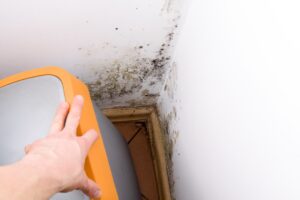 Not all mold is dangerous to human health, but it is still alarming and a nuisance to find it contaminating your home.
Not all mold is dangerous to human health, but it is still alarming and a nuisance to find it contaminating your home.
Mold can cause discoloration of your walls, and there may be a musty smell in the air which could trigger respiratory illness and allergies. In addition, over long periods of exposure to mold building materials can become structurally compromised.
When addressing mold growth, it is important to understand which type of mold you are dealing with. Each type has its own characteristics, growth patterns, and health effects of which you should be aware of.
Even non-toxic mold varieties can still make you sick. Mold produces thousands of different strains, but only a few, such as the notorious Stachybotrys chartarum, or black mold, produce toxins.
Black Colored Mold vs Toxic Black Mold
Mold is a fungus, and it grows virtually everywhere on earth. It is important for you to have an increased awareness about its potential health hazards.
People aren’t exactly sure how many mold species there are, but estimates range anywhere from 10,000 to more than a few hundred thousand. However, a very large percentage of these molds are harmless to humans. But some are deadly, such as toxic black mold.
Toxic black mold can release spores as it feeds on common household materials such as drywall, carpet, insulation, or sub-flooring that have been exposed to moisture.
These spores, if ingested or inhaled, can cause a range of unpleasant and even dangerous symptoms in humans.
The Genus Stachybotrys: What You Should Know
Stachybotrys is sometimes called toxic black mold because it produces mycotoxins that can cause severe health problems to those who have been exposed to it.
Stachybotrys exposure symptoms include difficulty breathing, sinusitis, fatigue, and even depression. Dull aches and pains in the sinus cavities are common among sufferers of black mold exposure.
If you’ve been exposed to Stachybotrys, you may also experience a burning sensation in your throat and lungs, mild chest pain, persistent cough, fever, and migraines. Stachybotrys mold is dark greenish or black in color and has a slimy texture.
Learn About Toxic Black Mold Symptoms and its Health Effects
It is important to avoid long exposure to this kind of mold as it can lead to mold poisoning or more serious problems. If you discover you have black mold in your home, call us for a consultation.
If you spot black mold in your home, do not ignore this warning sign. You want to conduct prompt testing and remediation. So be sure to call us to schedule an inspection. Don’t delay!







